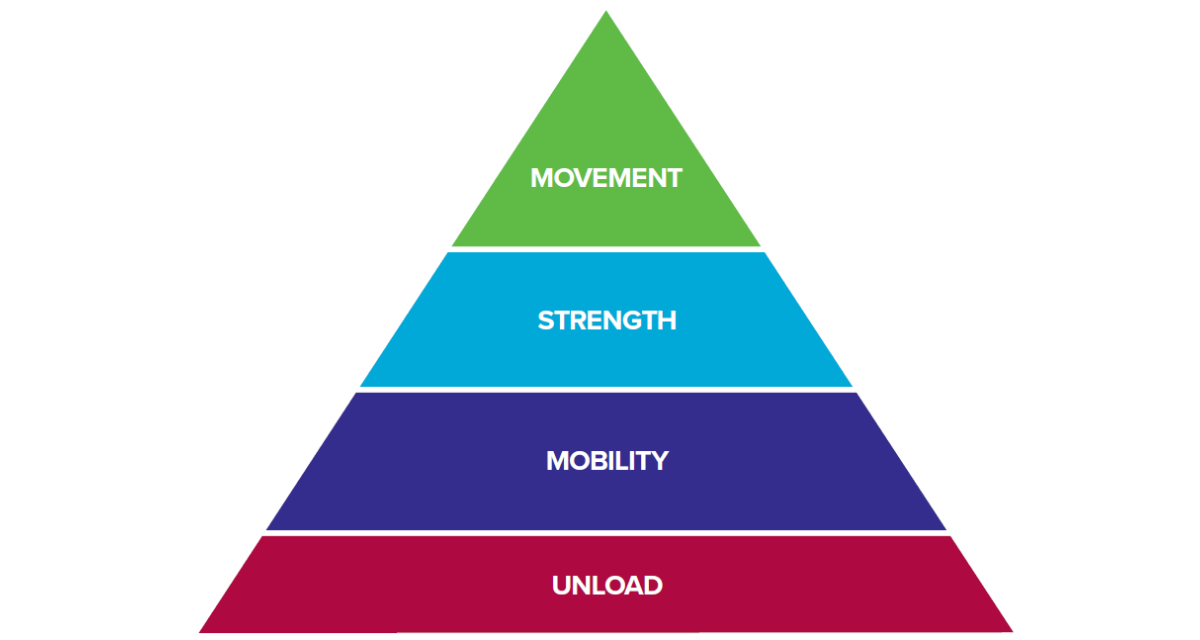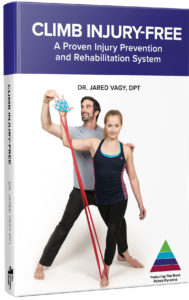
Through August 2nd you can enter to win a Climb Injury Free Prize pack straight from The Climbing Doctor. Simply tag a friend on The Climbing Doctor’s Social Media Takeover on Moja Gear’s Instagram or Facebook.
Prize pack includes:
Climb Injury-Free
This international best-selling book will teach you how to climb stronger and pain-free. It features the “Rock Rehab Pyramid.” A step-by-step rehabilitation and injury prevention system designed specifically for rock climbers. The goal of the four-phase system is to take you from the pain, inflammation and tissue overload stage to gain full mobility, strength and eventually pain-free climbing movement.
TheraBand Kinesiology Tape
Elastic kinesiology tape is used to offload muscles and provide circulatory support to healing tissues. It has an elasticity of 140% allowing it to conform and move over the skin. The tape allows full freedom of movement and is excellent for increasing circulation.
Finger Strengthener
These tools help strengthen the finger extensor muscles and tendons in the back of the hand, wrist, and fingers. Perform isometric holds at varied angles to mirror the muscle actions of the fingers while climbing.
Theraband Looped Band
The looped resistance band is an injury prevention tool that can be used for a variety of upper and lower body exercises.
TheraBand Full Length Band
The full-length band gives you the versatility to perform resistance exercises to prevent and rehabilitate climbing injury.
The Rock Rehab Pyramid is a step-by-step rehabilitation and injury prevention program designed specifically for rock climbers. It is comprised of four phases.
-
Unload
-
Mobility
-
Strength
-
Movement
Get your copy of Climb Injury Free by Dr. Jared Vagy, The Climbing Doctor.
Most climbers begin the rehabilitation process at the bottom of the pyramid in the unload phase where there is pain inflammation and tissue-overload. Through the rehabilitation process, you will progressively advance up the pyramid. The goal is to gain full mobility, strength, and eventually pain-free climbing movement. At this point, you will achieve full recovery.
Perform Under the Guidance of a Medical Professional
The rehabilitation guidelines in this book are not a substitute for assessment and treatment by your medical professional. Perform at your own risk.
Rock Rehab Pyramid Breakdown
Phase 1 – Unload: Uses splinting, traction, and taping techniques to unload the tissues. You can perform tissue unload for as long as it takes for your pain at rest to subside.
Phase 2 – Mobility: Uses three progressive stretching exercises to improve range of motion. Each exercise can be performed up to three times per day.
Phase 3 – Strength: Uses three progressive resistive exercises to increase strength. Each exercise can be performed daily.
Phase 4 – Movement: Comprised of three-movement advice tips and should be implemented during each session of climbing.
When to Progress to the Next Phase of the Pyramid
Once you are able to perform the prescribed exercises in a given phase of the pyramid without pain then you can progress to the next phase. Do not perform exercises if they are painful. There is no exact formula for how long it takes a climber to progress back to climbing and movement training. The recovery process is highly variable based on your injury and individual factors. If you have any questions regarding your progression using the pyramid, consult your medical professional.
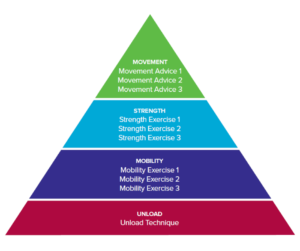
Pulley Sprain Strengthening Example
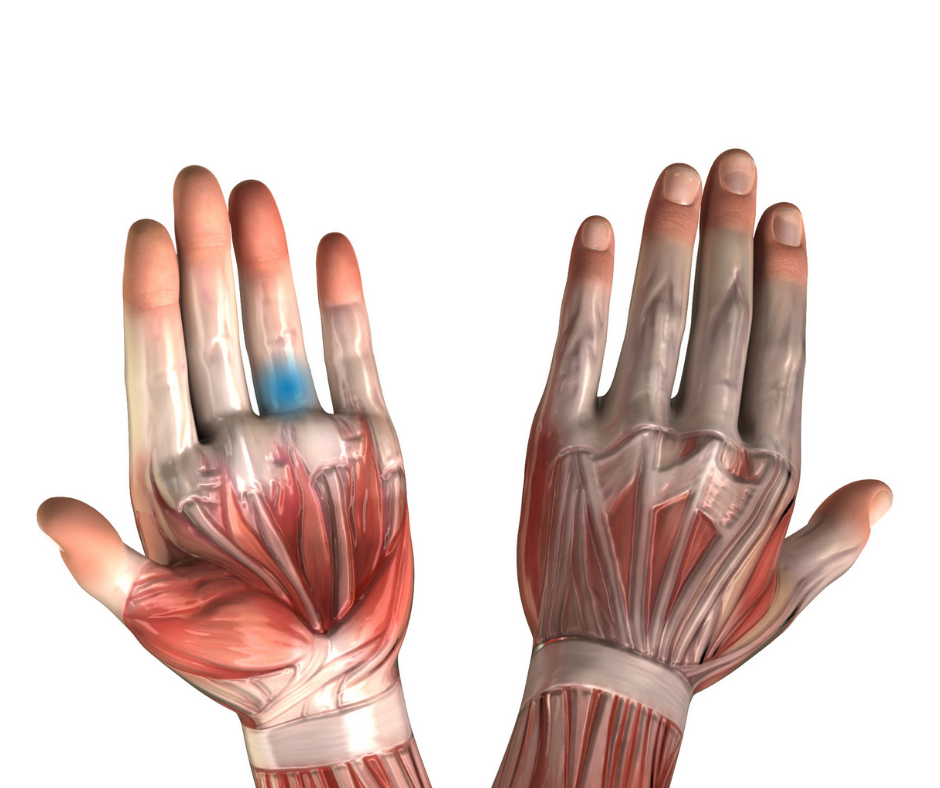
Signs and Symptoms
- Can occur over any digit, but most commonly occurs over the ring finger along the A2 pulley
- Tender to the touch along the injured pulley
- Swelling, redness, and inflammation
- Stiffness bending the fingers
- Painful to actively crimp and grip
Cause
The forearm muscles transition into long, narrow tendons as they extend into the wrist and fingers. These tendons thread through fibrous sheaths and pulleys, which keep them gliding flush to the finger bones, similar to the way a climbing rope runs through quickdraws. In each finger, there are five annular pulleys, which sling around the front of the bones like the eyelets of a fishing rod, and three cruciform pulleys, which form crosses over the bones, to secure the tendons. When the forearm muscles contract, they pull these tendons and flex the fingers.
If the finger flexor tendons create too strong of an outward force – something that can happen if you pull hard on a mono pocket, for example – they can stretch, tear or completely rupture a pulley.
Strength Level 1: Resisted Finger Expansions
Instructions
- Place a rubber-band around the tips of your fingers while maintaining a straight wrist.
- Spread open your fingers, without bending your wrist. Hold this position (see time suggestions below), then let your fingers collapse back in. Repeat on and off for 30 seconds.
What It Does
This exercise strengthens the finger extensor muscles and tendons in the back of the hand, wrist, and fingers. Perform isometric holds at varied angles to mirror the muscle actions of the fingers while climbing.
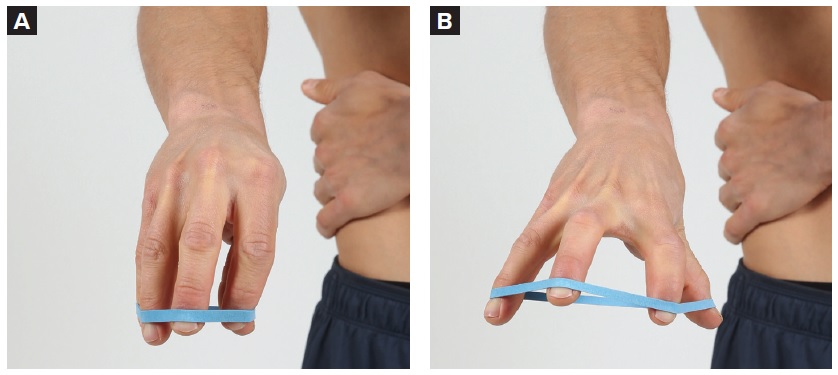
Dirtbag Tip
Use several rubber bands around your fingers to increase the resistance. You can find thick rubber bands in the vegetable section of the grocery market. They are usually wrapped around asparagus and broccoli.
Frequency
3 sets of 30 seconds (total time). Hold tension on and off throughout the duration. Choose an isometric hold time based on your preferred style of climbing to match the length of time you grip holds on the rock (refer to the chart below).

Strength Level 1: Exercise Progression
Instructions
Progress the exercise by using a resistive device, like the examples below.
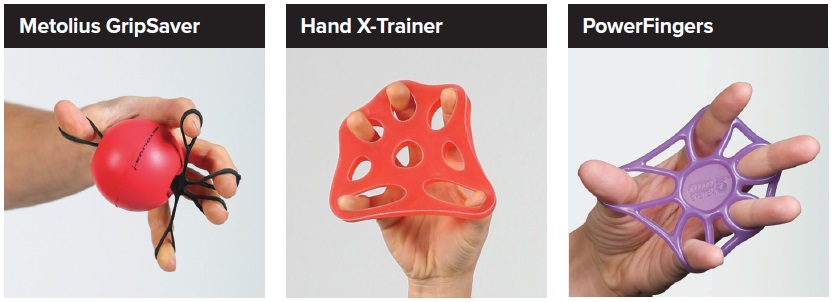
Variation
To better mimic real-life scenarios, perform the isometric finger exercises in common climbing hand positions, such as a half crimp or open hand. The images below provide two examples.
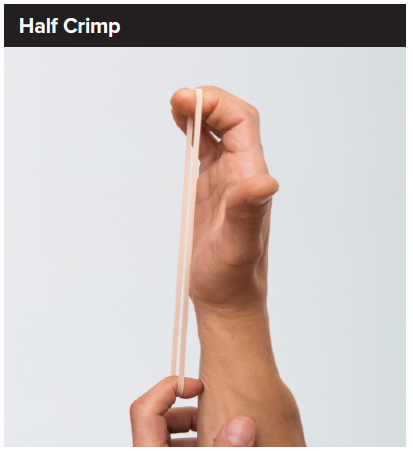
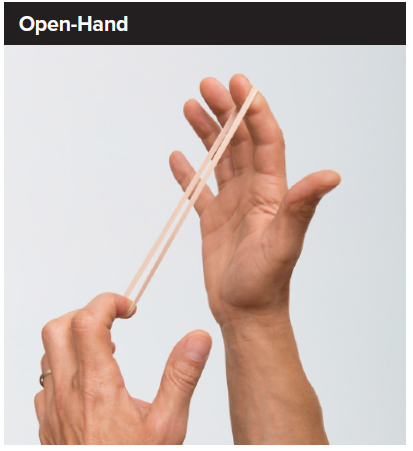
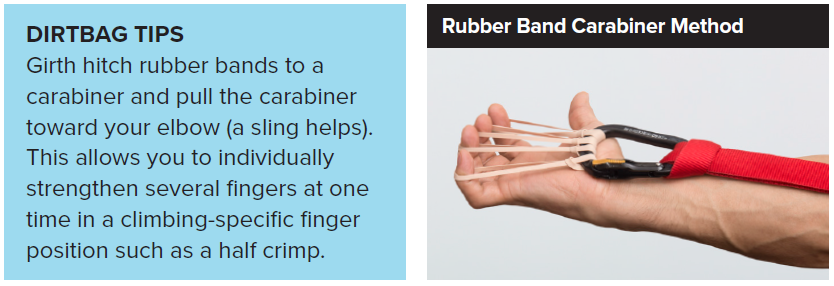
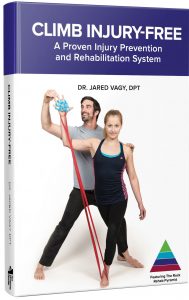 To learn more about how to prevent pulley sprains and other climbing-related injuries, check out The Climbing Doctor’s book, Climb Injury-Free
To learn more about how to prevent pulley sprains and other climbing-related injuries, check out The Climbing Doctor’s book, Climb Injury-Free .
.
Featuring the step-by-step “Rock Rehab Pyramid,” readers will learn a research-supported rehabilitation and injury prevention system designed specifically for rock climbers.
If you liked this article, we think you’ll also enjoy:
- How to Treat Wrist Pain with the TheraBand FlexBar
- How to Test Your Muscle Strength and Monitor Recovery for Climbing
- Emerging Concepts in Injury Prevention: Pulley Strain
- The Climbers’ Project: Exercises to Help you Climb Longer and Stronger by Preventing Shoulder Injury
Lastly, don’t forget to check out our rock climbing Buying Guides, free rock climbing eBooks, and the internet’s best climbing gear sales.

